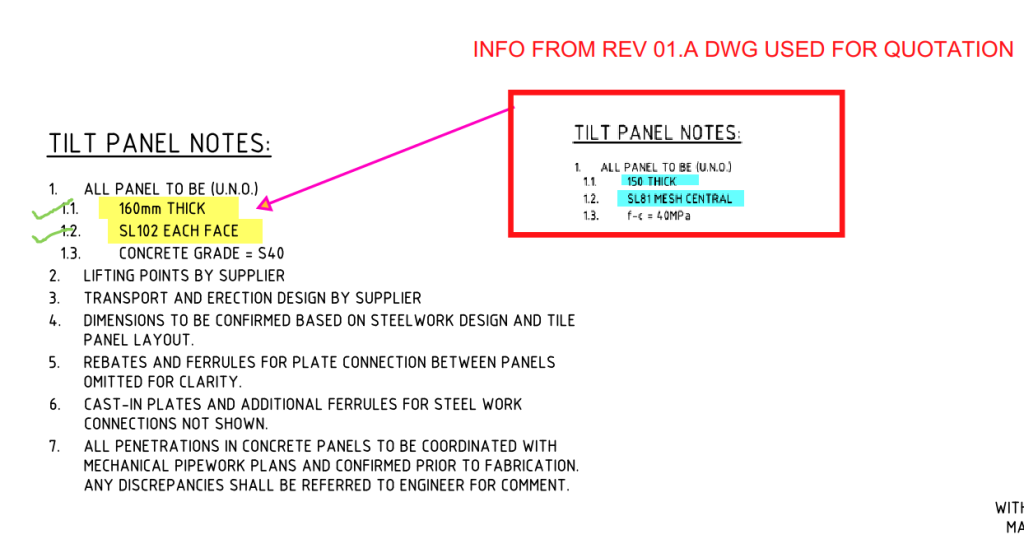It is essential to cross-check the revised consultant drawings we receive against the original drawings from the Quotation stage before commencing the project because this may affect prices.
For example, the panel break up, or the panel specs might have changed. If they have changed, this might have a material impact on price such as concrete and reinforcement cost.
What should we do when they make changes?
- Check the consultant drawing revisions and their date (between the quotation and the current stage).
For example:

2. Highlight the changes that occurred and mark them down in the latest structural PDF.
For Example:

3. Prepare a summary document report outlining the modifications.
For Example:

4. Inform the precast manufacturer and builder about these changes by sending the relevant information via email.
For Example:

Why do we need to check the consultant drawings?
This verification process will enable the precast manufacturer and builder to re-evaluate the timeline based on the information that was previously quoted. This allows potential Cost issues that could cause confusion or delays in the project timeline to be identified and resolved early on such as
- Cost estimation of individual precast panels, including their respective panel areas and concrete volumes, for manufacture.
- Cost estimation of approximate reinforcement and mesh weight requirements.
- List of cast-in items and loose items required, approximate quantities.
What are the key factors that need to be verified in the consultant drawings from a precast perspective?
- Panel Thickness and Types: Verify the panel thickness and types used, as specified in the Structural Drawings.
2. Panel Count: Confirm the panel count based on the panel split, as detailed in the Structural Drawings.
3. Panel Transportability and Tonnage: Conduct a transportability check and verify the tonnage of the panels from our end.
4. Panel Reinforcement:
- Perimeter bar diameter
- Mesh type used and its placement
- Additional reinforcement provided in the panel typical detail
- Reinforcement on central or either side ( specify location)
(Refer to Structural Drawings for details)
5. Precast Wall Pattern and Special Moulds: Verify the precast wall pattern and special moulds required, as specified in the Architectural Drawings.
6. Panel Finish: Confirm the panel finish, as specified in the Architectural Drawings.
7. Panel Connection Details: Verify the panel connection details, if applicable, as specified in the Structural Drawings
Leave a Reply